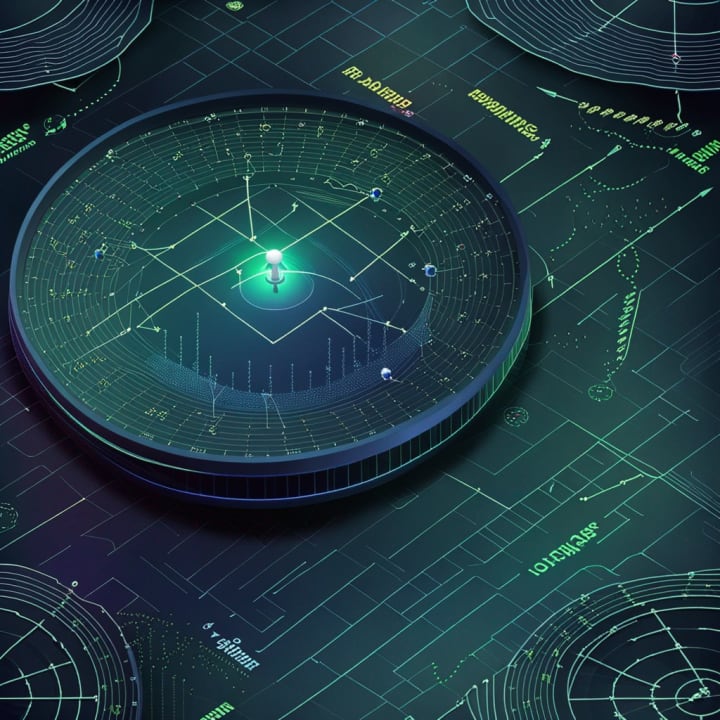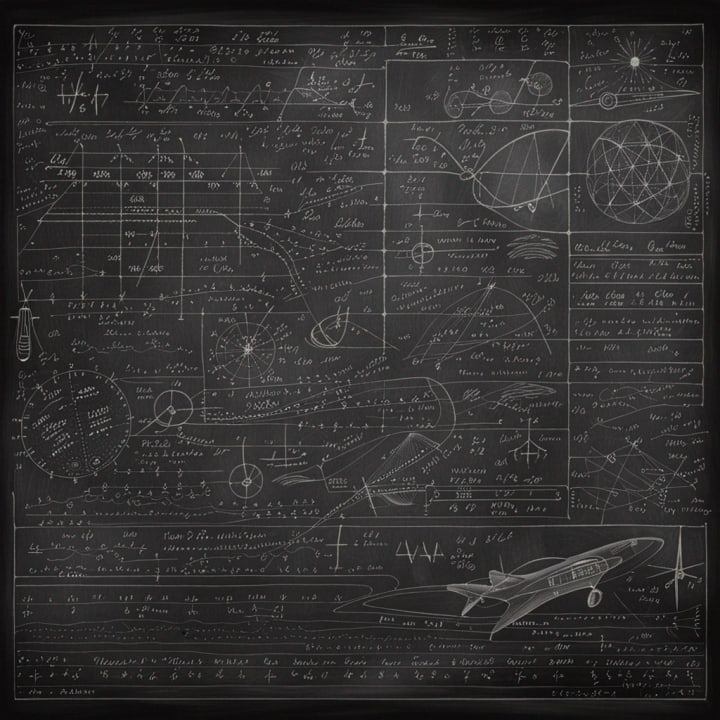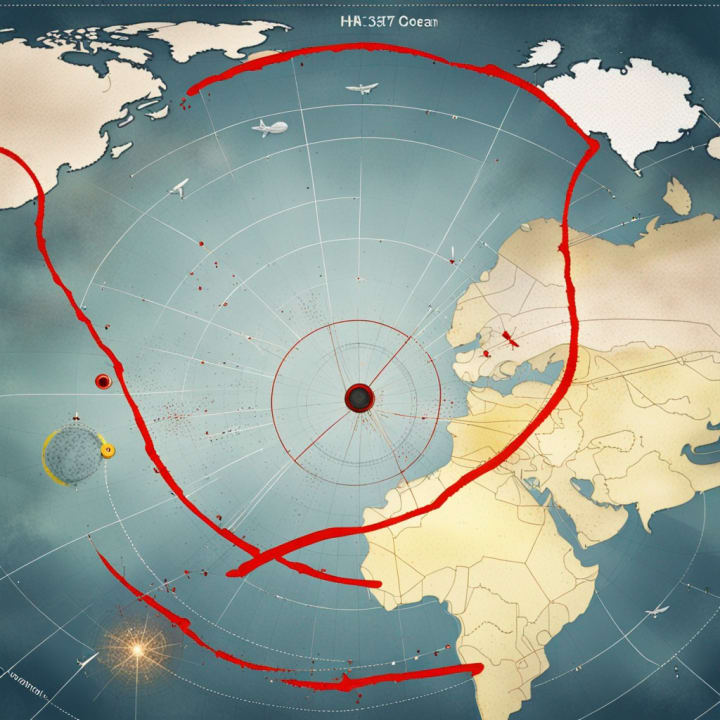
What happened to the plane that disappeared with hundreds of passengers on board? Read this amazing narrative that uncovers the truth about the lost Malaysian Airlines Flight 370 🛫❓🌌

The Mystery of Flight 370: What Happened to the Missing Plane?
On March 8, 2014, Malaysia Airlines Flight 370 left Kuala Lumpur for Beijing with 239 people on board. It never reached its destination. Instead, it vanished from radar screens and communication systems, leaving behind a trail of clues and mysteries that have baffled investigators and the public for almost a decade. What happened to Flight 370 and the people on board? Where did the plane go? Why did it change course and fly into the Indian Ocean? Who was in control of the aircraft? These are some of the questions that still haunt the families and friends of the victims, as well as the aviation experts and enthusiasts who have devoted their lives to finding the truth.
In this blog post, we will revisit the timeline of events that led to the disappearance of Flight 370, examine some of the evidence and data that have been collected over the years, and explore some of the leading theories and hypotheses that have emerged in 2023. We will also discuss why finding the plane is so important and what challenges and obstacles stand in the way of solving this mystery.

The Timeline of Flight 370’s Disappearance
To understand what happened to Flight 370, we need to go back to the beginning. Back to the very moment that Flight 370 rose into the air and set an erratic course that would lead to it mysteriously vanishing. Here is a detailed timeline of events that occurred on March 8, 2014, based on official reports, radar data, satellite data, and eyewitness accounts.
- 12:41 a.m. Flight 370 takes off from Kuala Lumpur International Airport with 227 passengers and 12 crew members on board. The plane is a Boeing 777-200ER, one of the most popular and reliable aircraft in service. The flight is expected to last about six hours and cover a distance of about 4,400 kilometers (2,700 miles).
- 1:01 a.m. The plane reaches a cruising altitude of 35,000 feet (10,700 meters). The seatbelt sign is turned off, and the cabin crew begins serving snacks and drinks to the passengers. Most of them are asleep or resting, as it is an overnight flight.
- 1:07 a.m. The Aircraft Communication Addressing and Reporting System (ACARS) aboard Flight 370 sends its last data transmission to Malaysian air traffic control. This system periodically transmits information about the plane’s status and performance to ground stations. However, someone on board turns off the ACARS system shortly after this transmission. This is not immediately noticed by air traffic control, as there is no reason to expect anything wrong with the plane.
- 1:19 a.m. Malaysian air traffic control receives the last voice message from Flight 370’s cockpit. It is believed to be First Officer Fariq Abdul Hamid speaking. He does not sound agitated or stressed, and he gives no indication that anything is wrong with the plane or its systems. He says “All right, good night”, indicating that he is signing off before entering Vietnamese airspace. This is a common phrase used by pilots when handing over communications from one airspace to another. However, these are also the last words anyone will ever hear from Flight 370.
- 1:21 a.m. Just as Flight 370 crosses into Vietnamese airspace over the South China Sea, someone in the cockpit switches off the plane’s transponder. This device constantly sends signals to radar stations with information such as flight number, altitude, speed, and heading. Without it, the plane becomes an unidentified blip on radar screens. This is much more noticeable than turning off the ACARS system, as it affects both civilian and military radar stations in the region.
- Sometime between 1:21 a.m. and 1:28 a.m. The unidentified plane suddenly changes course. It makes a U-turn and flies back over Malaysia in a westerly direction. It passes over several radar stations in Malaysia and Thailand, but no one knows for sure that it is Flight 370 or why it is flying off course.
- 1:30 a.m. The unidentified plane disappears from civilian radar screens over the Gulf of Thailand. It has flown out of range of most radar stations in the area. However, it is still visible on some military radar screens in Malaysia and Thailand.
- 1:37 a.m. Malaysian air traffic control notices that Flight 370’s ACARS system has not sent its scheduled data transmission. It was supposed to send data every 30 minutes after the previous transmission at 1:07 a.m. Since this is an automated system, air traffic control knows something is wrong with the plane or its systems. They try to contact Flight 370 by radio, but get no response. They also contact other planes in the vicinity, but none of them have seen or heard from Flight 370. They realize that the unidentified plane they have been tracking could be Flight 370, but they have no way to confirm this without contacting other agencies or countries.
- 2:15 a.m. The unidentified plane is still flying west over the Malay Peninsula. It passes over the island of Pulau Perak in the Strait of Malacca. It then turns northwest and heads towards the Andaman Sea. It is still visible on some military radar screens, but not on any civilian ones.
- 2:22 a.m. A Malaysian military radar station loses contact with the unidentified plane over the Andaman Sea. This is the last time anyone sees Flight 370 on radar. However, it will still be 18 more minutes before Malaysia Airlines acknowledges that Flight 370 is missing.
- 2:40 a.m. Air traffic control officially informs Malaysia Airlines that Flight 370 has disappeared. The airline scrambles all of its resources to try and locate the plane. They contact various agencies and organizations across the region and ask for their assistance. They also contact the Malaysian military and request their radar data. The search for Flight 370 begins.
- 3:45 a.m. Malaysia Airlines issues a “code red” to every agency that might be able to help locate the missing plane. This means that an emergency situation has occurred and that all available resources should be deployed to find the plane. The airline also contacts the families and friends of the passengers and crew on board and informs them that Flight 370 has lost contact with air traffic control.
- 6:30 a.m. Passengers in Beijing wait for Flight 370 to arrive at the airport. The flight is displayed on the arrival sign, but there is no sign of the plane. The passengers become restless and anxious, as there is no announcement or explanation for the delay.
- 7:24 a.m. Malaysia Airlines makes a public announcement on its Facebook page that Flight 370 has lost contact with air traffic control and that a search and rescue operation is underway. The news spreads across the world, and people are shocked and puzzled by the mysterious disappearance of the plane.
- 8:11 a.m. A satellite orbiting the Earth attempts to establish a connection with a plane passing below it. This is called a “handshake”, and it is part of a routine process to check the status and location of planes using satellite communication systems (SATCOM). However, the handshake is not completed, as the communication systems aboard Flight 370 are offline. The satellite logs the attempted handshake and relays it to a computer database on Earth. This data will later provide a vital clue to the location of Flight 370.

The Evidence and Data Collected Over the Years
Since Flight 370 disappeared, various types of evidence and data have been collected and analyzed by different agencies and organizations involved in the search for the plane. Some of these include:
- Radar data: Radar data from civilian and military radar stations in Malaysia, Thailand, Vietnam, Indonesia, and India have been used to track the movements of Flight 370 after it deviated from its planned route. Radar data can show information such as altitude, speed, heading, and location of an aircraft, but only if it is within range and has its transponder on. Radar data can also be affected by factors such as weather, terrain, interference, or human error.
- Satellite data: Satellite data from Inmarsat, a British company that provides satellite communication services to airlines, has been used to estimate the possible location of Flight 370 based on its SATCOM system. SATCOM is a system that allows planes to communicate with satellites using radio signals. These signals can be used to determine information such as distance, direction, speed, and altitude of an aircraft, but not its exact location. Satellite data can also be affected by factors such as noise, interference, or errors in calculation.
- Debris: Debris from Flight 370 has been found washed up on various shores in Africa and Indian Ocean islands over the years. These pieces of debris have been identified as belonging to or likely belonging to Flight 370 based on their serial numbers, markings, or physical characteristics. Debris can provide information such as impact damage, fire damage, or corrosion damage that can indicate how the plane crashed or broke apart.
- Voice recordings: Voice recordings from Flight 370’s cockpit have been retrieved from its cockpit voice recorder (CVR), one of the two devices that make up the “black box” or flight recorder aboard an aircraft. The CVR records all sounds in the cockpit, such as conversations between pilots, radio communications with air traffic control or other planes, or audible warnings or alarms from instruments or systems. Voice recordings can provide information such as tone, mood, stress level, or intention of pilots or other people in the cockpit.
- Flight data: Flight data from Flight 370’s flight data recorder (FDR), the other device that makes up the “black box” or flight recorder aboard an aircraft, has not been retrieved yet, as the FDR is still missing along with the rest of the plane. The FDR records various parameters of the flight, such as speed, altitude, heading, pitch, roll, yaw, engine performance, fuel consumption, or system status. Flight data can provide information such as flight path, maneuvers, anomalies, or malfunctions of the plane or its systems.

The Leading Theories and Hypotheses in 2023
Over the years, many theories and hypotheses have been proposed to explain what happened to Flight 370 and why it disappeared. Some of these are based on evidence and data, while others are based on speculation and imagination. Some of these are plausible and realistic, while others are fanciful and unrealistic. Here are some of the leading theories and hypotheses that have emerged in 2023:
- Pilot suicide: This theory suggests that one of the pilots of Flight 370, either Captain Zaharie Ahmad Shah or First Officer Fariq Abdul Hamid, deliberately took control of the plane, disabled all communications and navigation systems, and flew it into the Indian Ocean to end their own life and kill everyone else on board. This theory is based on evidence such as the turning off of the ACARS and transponder systems, the change of course and altitude of the plane, the lack of distress signals or signs of struggle from the cockpit or cabin, and the possible simulation of a similar flight path on Zaharie’s home flight simulator. However, this theory is challenged by factors such as the lack of clear motive or evidence of mental illness or stress from either pilot, the possibility of intervention or resistance from the co-pilot or cabin crew or passengers, and the difficulty of flying a large plane for hours without detection or interference.
- Hijacking: This theory suggests that Flight 370 was hijacked by someone on board, either a passenger or a crew member or a stowaway, who took control of the plane by force or deception and flew it to an unknown destination for an unknown purpose. This theory is based on evidence such as the turning off of the ACARS and transponder systems, the change of course and altitude of the plane, and the possibility of hiding in an underfloor area near the cockpit door. However, this theory is challenged by factors such as the lack of clear motive or evidence of involvement from any suspect or group, the difficulty of bypassing security measures and locking mechanisms on board, and the lack of communication or ransom demands from the hijacker(s).
- Sabotage: This theory suggests that Flight 370 was sabotaged by someone outside the plane, either a rogue state or a terrorist organization or a criminal syndicate, who tampered with its systems or planted a bomb or a device on board to cause it to crash or disappear for an unknown purpose. This theory is based on evidence such as the turning off of the ACARS and transponder systems, the change of course and altitude of the plane, and the possibility of remote hacking or interference with its SATCOM system. However, this theory is challenged by factors such as the lack of clear motive or evidence of involvement from any suspect or group, the difficulty of accessing or modifying the plane’s systems or components without detection or traceability, and the lack of claim of responsibility or credit from the saboteur(s).
- Accident: This theory suggests that Flight 370 was involved in an accident that caused it to crash or disappear due to a mechanical failure or a human error or a natural phenomenon. This theory is based on evidence such as the lack of clear motive or evidence of foul play from anyone on board or outside the plane, the possibility of a fire or an explosion or a decompression event on board that disabled its systems and incapacitated its crew and passengers, and the possibility of a weather anomaly or a navigation error that led it astray. However, this theory is challenged by factors such as the lack of clear indication or explanation for any malfunction or mishap that could have affected the plane’s performance or safety, the difficulty of flying a large plane for hours without any warning or alarm from its instruments or systems, and the improbability of finding no trace or debris of the plane in the vast ocean.

The Importance and Challenges of Finding Flight 370
Finding Flight 370 is important for many reasons. First and foremost, it is important for the families and friends of the victims, who deserve to know what happened to their loved ones and to have some closure and peace of mind. It is also important for the aviation industry and the public, who need to know if there was any flaw or risk in the plane’s design or operation or security that could affect other flights or passengers in the future. It is also important for the scientific and historical community, who could learn valuable lessons and insights from the data and evidence that could be recovered from the plane.
However, finding Flight 370 is also very challenging for many reasons. First and foremost, it is challenging because of the lack of reliable and conclusive evidence and data that could pinpoint its location or explain its disappearance. It is also challenging because of the vastness and complexity of the search area, which covers millions of square kilometers of ocean with varying depths, currents, terrains, and ecosystems. It is also challenging because of the cost and difficulty of conducting and coordinating a large-scale and long-term search operation that involves multiple countries, agencies, organizations, and technologies.

The Conclusion
Flight 370 is one of the greatest mysteries of modern aviation history. It has captivated and puzzled the world for almost a decade. It has also sparked countless theories and hypotheses that attempt to solve it. However, none of these theories or hypotheses can be proven or disproven with certainty, as there is not enough evidence or data to support or refute them. Until Flight 370 is found or more information is revealed, we can only speculate and wonder about what happened to the missing plane and the people on board. We can also hope and pray that one day, the truth will come out and justice will be served.
📝 SOURCES






Comments
There are no comments for this story
Be the first to respond and start the conversation.